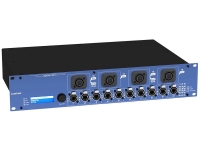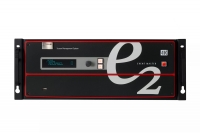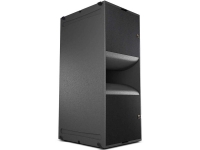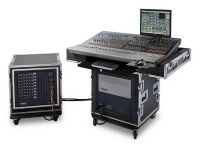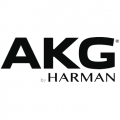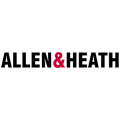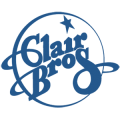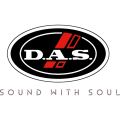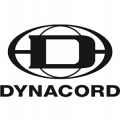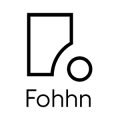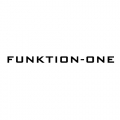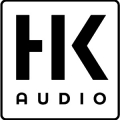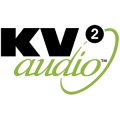ABOUT THE PRODUCT
ABOUT THE MANUFACTURER
GLOSSARY
VENUE S3L
The power of Avid VENUE?everywhere
Go from stage to studio and beyond. With Avid VENUE | S3L-X, you get the incredible sound clarity, power, and efficiency of VENUE in an ultra compact system. But that?s not all. Archive shows directly to Pro Tools. Streamline FOH, monitor, and broadcast workflows by sharing the same I/O across multiple networked systems. You can even set up a mobile recording/mixing studio using just the control surface and Pro Tools on your laptop, making S3L-X the most versatile system in live sound. And with the latest VENUE software, you gain new touchscreen workflows for faster navigation, plus support for the new VENUE | On-Stage iOS app for remote monitor mix control.
Control mixes with a touch?just added
With Avid VENUE 4.6 software, you gain a whole new level of touchscreen capabilities to navigate mixes and get to what you need faster?similar to the touch-based workflows in VENUE | S6L. Tap parameters on your display to target and assign them instantly to your S3 Channel Control encoders for easy access. Adjust faders and other settings directly on the touchscreen. Plus, the latest software also includes numerous system optimizations and improvements, so you experience even greater performance than ever before.
Mix monitors on your iPhone or iPad?just added
Wish you could step away from your console and fine-tune individual monitor mixes on stage? You can with the new VENUE | On-Stage iOS app, which enables you to control Aux master levels, Aux send levels, and Aux pans remotely through its VENUE-style interface. You can even let performers control their own monitor mixes using their own mobile devices. Best of all, it`s a free download from the Apple App Store.
Mix anything, anywhere
It may be small, but it?s mighty. From major festivals to clubs with the tiniest FOH spaces, the compact Avid VENUE S3L-X can handle even the most demanding live productions. Experience exceptional performance when handling plug-in-heavy mixes. Mix and record live shows with the utmost efficiency. And easily scale your system to accommodate any size production.
Achieve incredible sound?live
VENUE systems are respected for their sound quality. The clarity. The warmth. S3L-X is no different, offering professional-grade I/O, transparent preamps, and EQ and dynamics on all outputs. And with direct support for the same plug-ins used in top recording studios, you can easily re-create an artist?s signature studio sound live. And eliminate expensive outboard gear and cumbersome external plug-in ?servers.?
Set up a mobile studio
You archive every live show. But what happens to the recordings? With S3L-X, you can use the S3 as a standalone control surface with your laptop to remix shows to share with fans or for future commercial release. Not just Pro Tools sessions, but projects created in Logic, Cubase, and other DAWs too. What?s more, you even record overdubs and more through the S3?s built-in 4x6 audio interface.
Reduce complexity and cost
Forget fussing with bulky analog splits. With S3L-X, you can share the same I/O across multiple networked systems?without any loss of audio quality. This alone can save you thousands by reducing I/O and cable requirements, set-up time, and transportation costs. Plus, True Gain technology automatically manages gain compensation to ensure the proper signal levels in each engineer?s mix.
Scale up without being weighed down
With S3L-X, you can easily scale the system to meet your needs. Go from 16 mic pres with one Stage 16 box up to 64 with four. Rack your I/O in one location for easy supervision, or place each box closer to sources throughout the venue?up to 328 feet (100 meters) away. And with Ethernet AVB connectivity, all you need are lightweight, inexpensive Cat5e cables, putting an end to expensive, bulky analog snakes.
Get quick ?n? easy USB drive recording
Don?t need a full Pro Tools multitrack session? Get 2-track recording and playback by connecting a USB Flash drive to the E3 engine. Archive stereo recordings of your board mix. Organize playlists in VENUE software to play pre-show or walk-up music. You can even integrate audio files with VENUE snapshots and events to trigger spot effects, cues, and music beds for theater performances.
Professional used lighting equipment.| Professional second hand lighting equipment.| Professional pre owned lighting equipment.
Professional used audio equipment.| Professional second hand audio equipment.| Professional pre owned audio equipment.
Second hand audio gear. | Second hand lighting.
Pro audio equipment, second hand amplifiers, DJ, second hand sound systems, second hand Microphones, second hand Media Players.
Outdoor & Indoor LED screens for sale, LED mobile truck.
Light trussing, Gebrauchte Veranstaltungstechnik, used stage equipment Stage & Theatre lighting products.
Used AVID
Avid Technology is an American technology and multimedia company founded in August 1987 by Bill Warner, based in Burlington, Massachusetts. It specialises in audio and video; specifically, digital non-linear editing (NLE) systems, video editing software, audio editing software, music notation software, management and distribution services.
Avid products are now used in the television and video industry to create television shows, feature films, and commercials. Media Composer, a professional non-linear editing system, is Avid`s flagship product.Avid was founded by Bill Warner—a marketing manager from Apollo Computer. A prototype of their first non-linear editing system—the Avid Media Composer—was shown at the National Association of Broadcasters (NAB) convention in April 1988. The Avid was based on an Apple Macintosh II computer, with special hardware and software of Avid`s own design installed. The Avid was "the biggest shake-up in editing since Melies played with time and sequences in the early 1900s".By the early 1990s, Avid products began to replace such tools as the Moviola, Steenbeck, and KEM flatbed editors, allowing editors to handle their film creations with greater ease. The first feature film edited using the Avid was Let`s Kill All the Lawyers in 1992, directed by Ron Senkowski. The film was edited at 30fps NTSC rate, then used Avid MediaMatch to generate a negative cutlist from the EDL.The first feature film edited natively at 24fps with what was to become the Avid Film Composer was Emerson Park. The first studio film to be edited at 24fps was Lost in Yonkers, directed by Martha Coolidge. By 1994 only three feature films used the new digital editing system. By 1995 dozens had switched to Avid, and it signaled the beginning of the end of cutting celluloid. In 1996 Walter Murch accepted the Academy Award for editing The English Patient (which also won best picture), which he cut on the Avid. This was the first Editing Oscar awarded to a digitally edited film (although the final print was still created with traditional negative cutting).
In 1994 Avid introduced Open Media Framework (OMF) as an open standard file format for sharing media and related metadata. In recent years the company has extended its business expertise through several acquisitions and internal investments towards the full palette of multimedia generation products including those to store and manage media files. In 2006 Avid launched new products such as Avid Interplay and Unity Isis. Avid used to be considered just a "video editing" company, but now has consolidated a well-rounded multimedia generation technology company.
Professional used lighting equipment.| Professional second hand lighting equipment.| Professional pre owned lighting equipment.
Professional used audio equipment.| Professional second hand audio equipment.| Professional pre owned audio equipment.
Second hand audio gear. | Second hand lighting.
Pro audio equipment, second hand amplifiers, DJ, second hand sound systems, second hand Microphones, second hand Media Players.
Outdoor & Indoor LED screens for sale, LED mobile truck.
Light trussing, Gebrauchte Veranstaltungstechnik, used stage equipment Stage & Theatre lighting products.
Active: Powered. An active crossover is electrically powered and divides the line-level signal prior to amplification. An active speaker includes an active crossover and built-in amplifier.
Actuality: Audio from an announcer speaking.
Amplifier: A component that increases the gain or level of an audio signal.
Balanced Input: A connection with three conductors: two identical signal conductors that are 180 degrees out of phase with each other, and one ground. This type of connection is very resistant to line noise.
Bandpass: A two-part filter that cuts both higher and lower frequencies around a center band. A bandpass enclosure cuts high frequencies by acoustic cancellation and low frequencies by natural physical limitations on bass response.
Bandwidth: In audio, the range of frequencies a device operates within. In video, the range of frequencies passed from the input to the output. Bandwidth can also refer to the transmission capacity of an electronic communications device or system the speed of data transfer,is very important when planning a meeting for the attendees to stay connected.
Bass: Low frequencies; those below approximately 200 Hz.
Bi-Wiring: A method of connecting an amplifier or receiver to a speaker in which separate wires are run between the amp and the woofer and the amp and the tweeter.
Boost: To increase, make louder or brighter; opposite of attenuate.
Bridging: Combining two channels of an amplifier to make one channel that more powerful. One channel amplifies the positive portion of an audio signal and the other channel amplifies the negative portion, which are then combined at the output.
CD: Compact Disc. Ubiquitous digital audio format. Uses 16-bit/44.1-kHz sampling rate PCM digital signal to encode roughly 74 or 80 minutes of two- channel, full-range audio onto a 5-inch disc.
CD-R: Recordable Compact Disc.
CD-RW: Rewritable Compact Disc.
Channel: In components and systems, a channel is a separate signal path. A four-channel amplifier has at least four separate inputs and four separate outputs.
Coloration: Any change in the character of sound (such as an overemphasis on certain tones) that reduces naturalness.
Crossover: A component that divides an audio signal into two or more ranges by frequency, sending, for example, low frequencies to one output and high frequencies to another. An active crossover is powered and divides the line-level audio signal prior to amplification. A passive crossover uses no external power supply and may be used either at line level or, more commonly, at speaker level to divide the signal after amplification and send the low frequencies to the woofer and the high frequencies to the tweeter.
Crossover Frequency: The frequency at which an audio signal is divided. 80 Hz is a typical subwoofer crossover point and is the recommended crossover point in theatrical and home THX systems. Frequencies below 80 Hz are sent to the subwoofer signals above 80 Hz are sent to the main speakers.
Cut: To reduce, lower; opposite of boost.
Decibel (dB): A logarithmic measurement unit that describes a sound`s relative loudness, though it can also be used to describe the relative difference between two power levels. A decibel is one tenth of a Bel. In sound, decibels generally measure a scale from 0 (the threshold of hearing) to 120-140 dB (the threshold of pain). A 3dB difference equates to a doubling of power. A 10dB difference is required to double the subjective volume. A 1dB difference over a broad frequency range is noticeable to most people, while a 0.2dB difference can affect the subjective impression of a sound.
Delay: The time difference between a sonic event and its perception at the listening position (sound traveling through space is delayed according to the distance it travels). People perceive spaciousness by the delay between the arrival of direct and reflected sound (larger spaces cause longer delays.
Diaphragm: The part of a dynamic loudspeaker attached to the voice coil that produces sound. It usually has the shape of a cone or dome.
Diffusion: In audio, the scattering of sound waves, reducing the sense of localization. In video, the scattering of light waves, reducing hot spotting, as in a diffusion screen.
Digital Audio Server: Essentially a hard drive, a digital audio server stores compressed audio files (like MP3 or WMA). Most include the processing to make the files, and all have the ability to play them back.
Direct-Stream Digital: A format for encoding high-resolution audio signals. It uses a 1-bit encoder with a sampling rate of 2,822,400 samples per second (verses 44,100 for CD). Used to encode six high-resolution channels on SACD.
Dispersion: The spread of sound over a wide area.
Distortion: Any undesired change in an audio signal between input and the output.
DNR: Dynamic Noise Reduction. A signal-processing circuit that attempts to reduce the level of high-frequency noise. Unlike Dolby NR, DNR doesn’t require preprocessing during recording.
Dolby B: A noise-reduction system that increases the level of high frequencies during recording and decreases them during playback.
Dolby C: An improvement on Dolby B that provides about twice as much noise reduction.
Dolby Digital: An encoding system that digitally compresses up to 5.1 discrete channels of audio (left front, center, right front, left surround, right surround, and LFE) into a single bitstream, which can be recorded onto a DVD, HDTV broadcast, or other form of digital media. When RF-modulated, it was included on some laser discs, which requires an RF-demodulator before the signal can be decoded. Five channels are full-range; the .1 channel is a band-limited LFE track. A Dolby Digital processor (found in most new receivers, preamps, and some DVD players) can decode this signal back into the 5.1 separate channels. Most films since 1992`s Batman Returns have been recorded in a 5.1 digital format, though a number of films before that had 6-channel analog tracks that have been remastered into 5.1.
Dolby EX: An enhancement to Dolby Digital that adds a surround back channel to 5.1 soundtracks. The sixth channel is matrixed from the left and right surround channels. Often referred to as 6.1. Sometimes referred to as 7.1 if the system uses two surround back speakers, even though both speakers reproduce the same signal. Software is backwards-compatible with 5.1 systems, but requires an EX or 6.1 processor to obtain additional benefit.
Dolby Pro Logic: An enhancement of the Dolby Surround decoding process. Pro Logic decoders derive left, center, right, and a mono surround channel from two-channel Dolby Surround encoded material via matrix techniques.
Dolby Pro Logic II: An enhanced version of Pro Logic. Adds improved decoding for two-channel, non-encoded soundtracks and music.
Driver: A speaker without an enclosure; also refers to the active element of a speaker system that creates compressions and rarefactions in the air.
DSP: Digital Signal Processing. Manipulating an audio signal digitally to create various possible effects at the output. Often refers to artificially generated surround effects derived from and applied to two-channel sources.
DTS: Digital Theater Systems. A digital sound recording format, originally developed for theatrical film soundtracks, starting with Jurassic Park. Records 5.1 discrete channels of audio onto a handful of laser discs, CDs, and DVDs. Requires a player with DTS output connected to a DTS processor.
DTS ES: An enhanced version of the 5.1 DTS system. Like Dolby’s Surround EX, a sixth channel is added. In some cases (DTS ES Discrete), the sixth channel is discrete. Software is backwards-compatible with 5.1 systems, but requires an ES or 6.1 processor to obtain additional benefit. Neo: 6 is a subset of DTS ES that creates 6.1 from material with fewer original channels.
Dynamic Range: The difference between the lowest and the highest levels; in audio, it’s often expressed in decibels. In video, it’s listed as the contrast ratio.
Professional used lighting equipment.| Professional second hand lighting equipment.| Professional pre owned lighting equipment.
Professional used audio equipment.| Professional second hand audio equipment.| Professional pre owned audio equipment.
Second hand audio gear. | Second hand lighting.
Pro audio equipment, second hand amplifiers, DJ, second hand sound systems, second hand Microphones, second hand Media Players.
Outdoor & Indoor LED screens for sale, LED mobile truck.
Light trussing, Gebrauchte Veranstaltungstechnik, used stage equipment Stage & Theatre lighting products.

